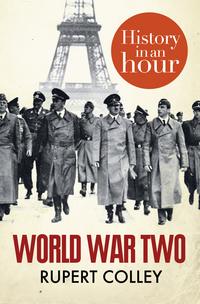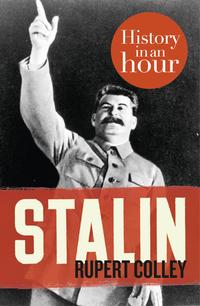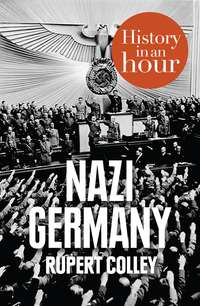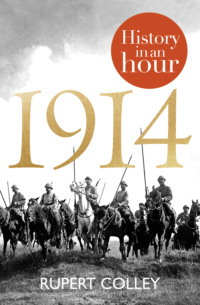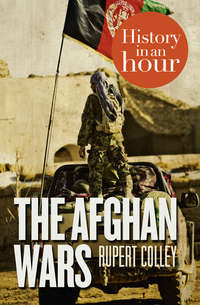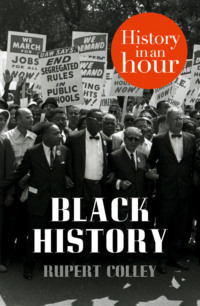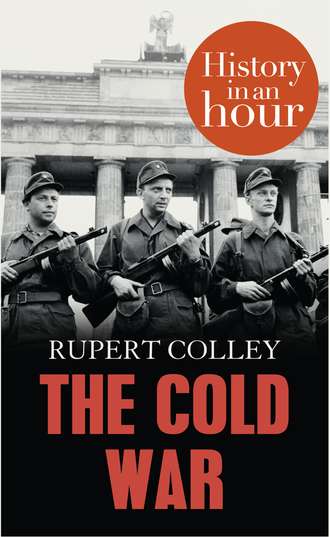
Полная версия
The Cold War: History in an Hour
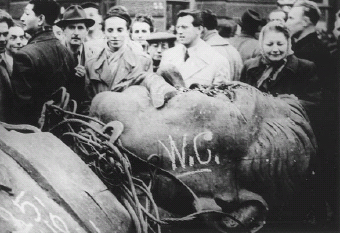
Hungarian Revolution: revolutionaries spit on a fallen statue of Stalin, October 1956
The American Hungarian Federation
But it was the Hungarian Uprising in October 1956 that truly tested the extent of the Soviet Union’s resolve. Following the relative success in Poland, students and workers took to the streets, tearing down a huge statue of Stalin (pictured above), and demanding greater freedom and the right to worship and protesting against the excesses of the Hungarian secret police. Khrushchev ordered in Soviet troops but replaced the unpopular Hungarian leader with the reformist Imre Nagy. With Nagy in place, Khrushchev withdrew his troops to the Hungarian border.
The protest continued and hundreds of Hungary’s secret police were lynched. Nagy, siding with the rebels, demanded Hungary’s withdrawal from the Warsaw Pact and was prepared to declare Hungary’s neutrality. This went much further than Poland; Nagy had gone too far. The rebels hoped and expected support and aid from the West, but Britain and France were distracted by the emerging crisis over the Suez Canal, and the USA by presidential elections. The aid never materialized. Chairman Mao encouraged Khrushchev to take a firmer line, so Khrushchev, taking advantage of the West’s preoccupations, ordered the tanks back in. This time, with brutal efficiency, the uprising was crushed.
Nagy sought sanctuary in the Yugoslavian embassy and was replaced by the hard-line Janos Kadar, who, loyal to Moscow, remained in charge until 1988. Over 200,000 Hungarians fled across the border into Austria and the West until that escape route was sealed off. Thousands were executed by the regime in reprisal; and Nagy, lured out of the embassy, was arrested, tried and shot. Khrushchev may have denounced Stalin as a tyrant, but when need be, he could be equally as ruthless.
Space Wars: ‘Flopnik’
Supremacy in space, so the superpowers believed, equated to control of the Earth. On 5 October 1957, the Soviets launched the first satellite, or Sputnik, into space, followed a month later, on 3 November, the fortieth anniversary of the Russian Revolution, with a second, this time with an astronaut of sorts on board – Laika, a dog. Animal lovers throughout the world protested. The Americans were shocked by how far the Soviets had raced ahead, and more so when their own launch, on 6 December, resulted in a humiliating failure when their rocket exploded on take-off: ‘Flopnik’, teased the press. The US felt it was fast becoming a ‘second-rate power’ behind the Soviet Union. In response, it formed NASA (National Aeronautics and Space Administration) and did finally succeed in launching its own rocket in January 1958. However, the ultimate humiliation came on 12 April 1961, when the Soviet astronaut, Yuri Gagarin (pictured below), became the first man in space in a round-the-world flight lasting an hour and forty-eight minutes. Gagarin returned a hero and Khrushchev was delighted. The two men toured around Moscow in an open-top car. Stung into action, John F. Kennedy, elected US president in November 1960, promised that America would put the first man on the moon before the end of the decade.
Конец ознакомительного фрагмента.
Текст предоставлен ООО «ЛитРес».
Прочитайте эту книгу целиком, купив полную легальную версию на ЛитРес.
Безопасно оплатить книгу можно банковской картой Visa, MasterCard, Maestro, со счета мобильного телефона, с платежного терминала, в салоне МТС или Связной, через PayPal, WebMoney, Яндекс.Деньги, QIWI Кошелек, бонусными картами или другим удобным Вам способом.


